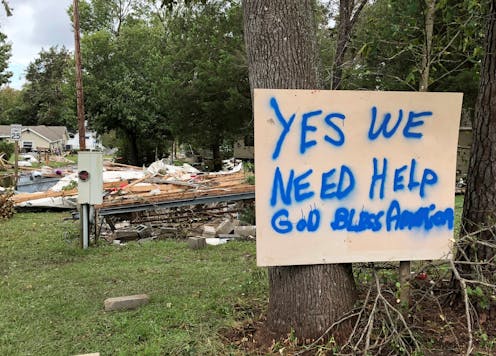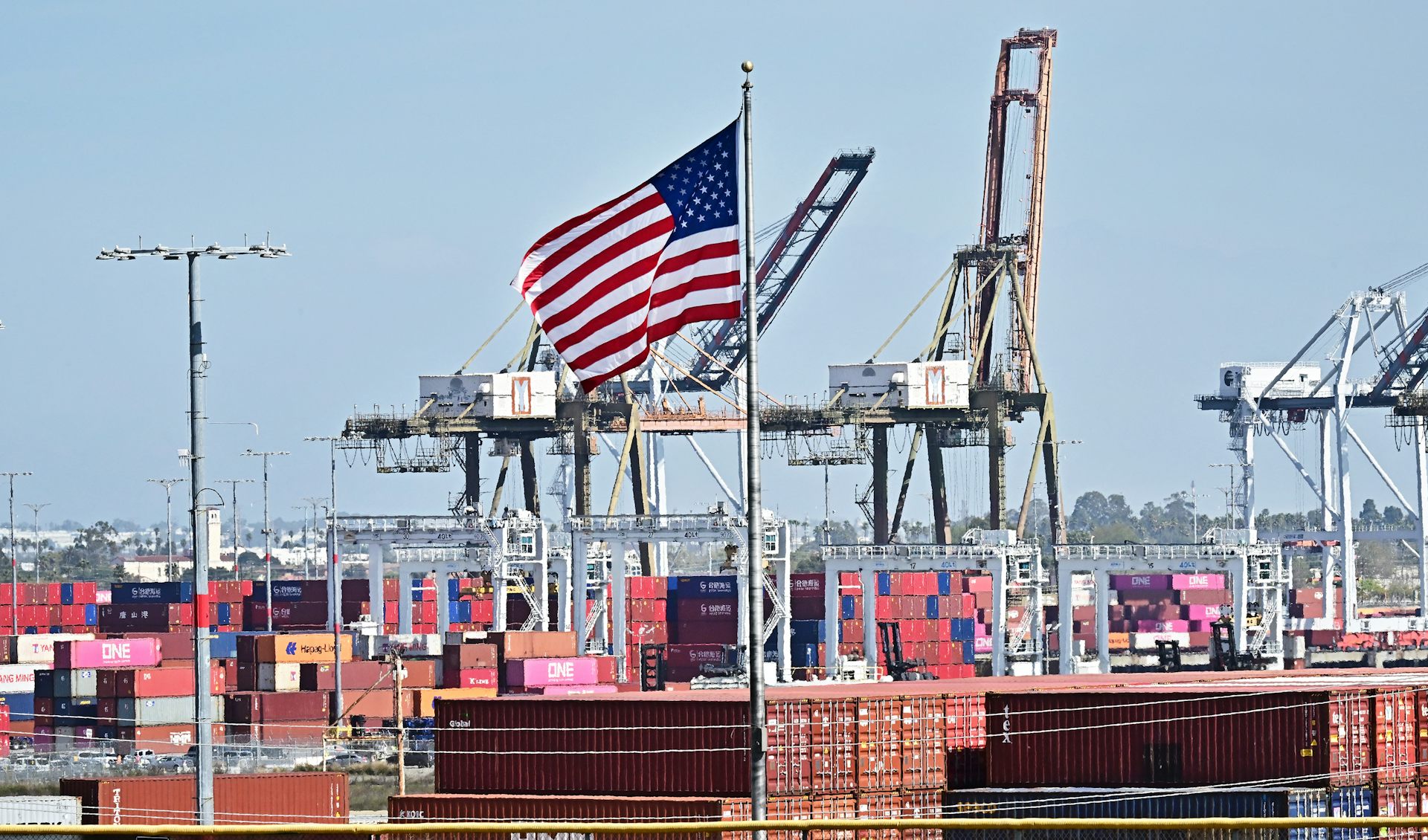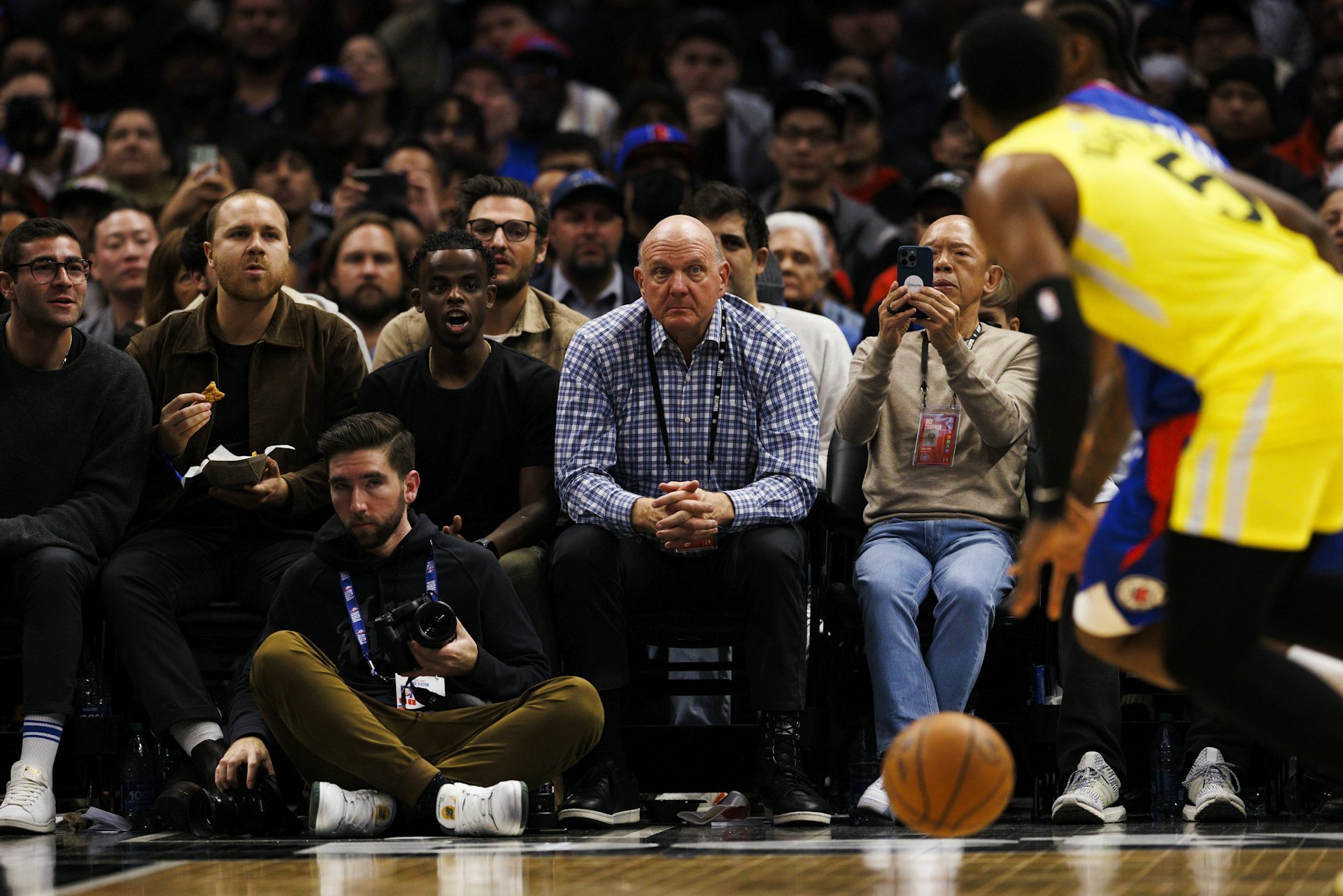US generosity after disasters: 4 questions answered
Donations to relief efforts tend to dry up within a few months.

After 9/11, Americans responded with the kind of outpouring of generosity usually reserved for the most powerful hurricanes and earthquakes. Ever since those terrorist attacks, the Indiana University Lilly Family School of Philanthropy has tracked donations from people, businesses and foundations after natural and man-made disasters. Here are some of the highlights of what we’ve learned.
1. How quickly do donations roll in?
Most Americans who donate to support disaster relief act quickly. They give to charities that can help with relief efforts when they see photos and video clips that capture the fury of the storms and the devastation wrought by hurricanes and earthquakes.
Americans typically make these donations within six weeks of a big disaster, when media coverage is the most intense. Their contributions usually slow to a crawl within two or three months and typically dry up by the six-month mark, once the cameras stop rolling and news cycle moves on – even as the needs remain significant.
Giving after Hurricane Katrina marked an exception to this rule. The cumulative total donations for relief efforts after that storm almost doubled from the second month to the sixth month, rising from US$2.2 billion to almost $4.5 billion.
2. How much do Americans give after disasters?
While massive donations from celebrities get the most attention, most of these disaster relief contributions are small and from people you’ve never heard of. Almost half of Americans reported giving money to charities for disaster relief after Katrina, and almost three-fourths donated after 9/11, we found.
The typical, or median, gift following both emergencies was $50 per household, and few households donated more than $100, according to data we analyzed from the Conference Board, a business research group.
3. What kind of people give?
To learn more about who gives to relief efforts, we studied the demographics of people who made donations to charities that raised money to support victims of the 9/11 attacks.
We found that older people were more likely to contribute. For each additional year of age, individuals were 3.4 percent more likely to donate for 9/11 relief, regardless of their income, education and marital status.
Households with higher incomes tended to give more than lower-income families. For example, households earning $80,000 or more gave an average of $242 to cover 9/11 relief efforts, more than three times that of households earning $40,000 or less.
We detected few other statistically significant differences among donors. That is, Americans gave the same way whether they were men or women; white, black, Latino, Asian-American or Native American; if they were high school dropouts or had graduate degrees; if they had young children, grown children or no kids at all.
Still, religious people, those with at least some college education and families with college students were more likely to donate and to volunteer than everyone else. Those with more education and higher incomes were significantly more likely to donate blood, food or clothing – but not more likely to give money.
We also found that men were significantly less likely to donate in-kind items than women.
4. How much do Americans donate for big relief efforts?
Americans often give on a big scale to major relief efforts within our borders and abroad.
Within six months of the emergencies that arose from Hurricane Katrina in August 2005, U.S. donors wrote checks totaling $4.5 billion, which we believe is the highest total ever. Americans gave $2.8 billion after 9/11, $2 billion after the 2004 Indian Ocean tsunami and $1.6 billion following Haiti’s 2010 earthquake, the three other largest waves of donations since 2001.
Significant but smaller sums were raised after hurricanes Harvey, Irma and Maria in 2017, the earthquake and tsunami that rocked Japan in 2011 and Superstorm Sandy in 2012.
It is too soon to say how much Americans will donate to support relief efforts after Hurricane Florence. But whether they’re large or small, these donations are extraordinarily generous and generally altruistic. They help strangers without expecting anything in return.
This is an updated version of an article originally published on Sept. 11, 2017.
Patrick Rooney and the Lilly Family School of Philanthropy receives funding from numerous charities, foundations, and donors. He serves on numerous boards, task forces, and advisory committees for charities.
Read These Next
The Bible says little about Jesus’ childhood – but that didn’t stop medieval Christians from enjoyin
Legends about Jesus’ early years that circulated in medieval Europe often drew on apocryphal texts.
How a niche Catholic approach to infertility treatment became a new talking point for MAHA conservat
Mainstream medical organizations have criticized ‘restorative reproductive medicine,’ but some Catholics…
Tariffs 101: What they are, who pays them, and why they matter now
Tariffs are taxes on imports, but the costs don’t stay at the border.






